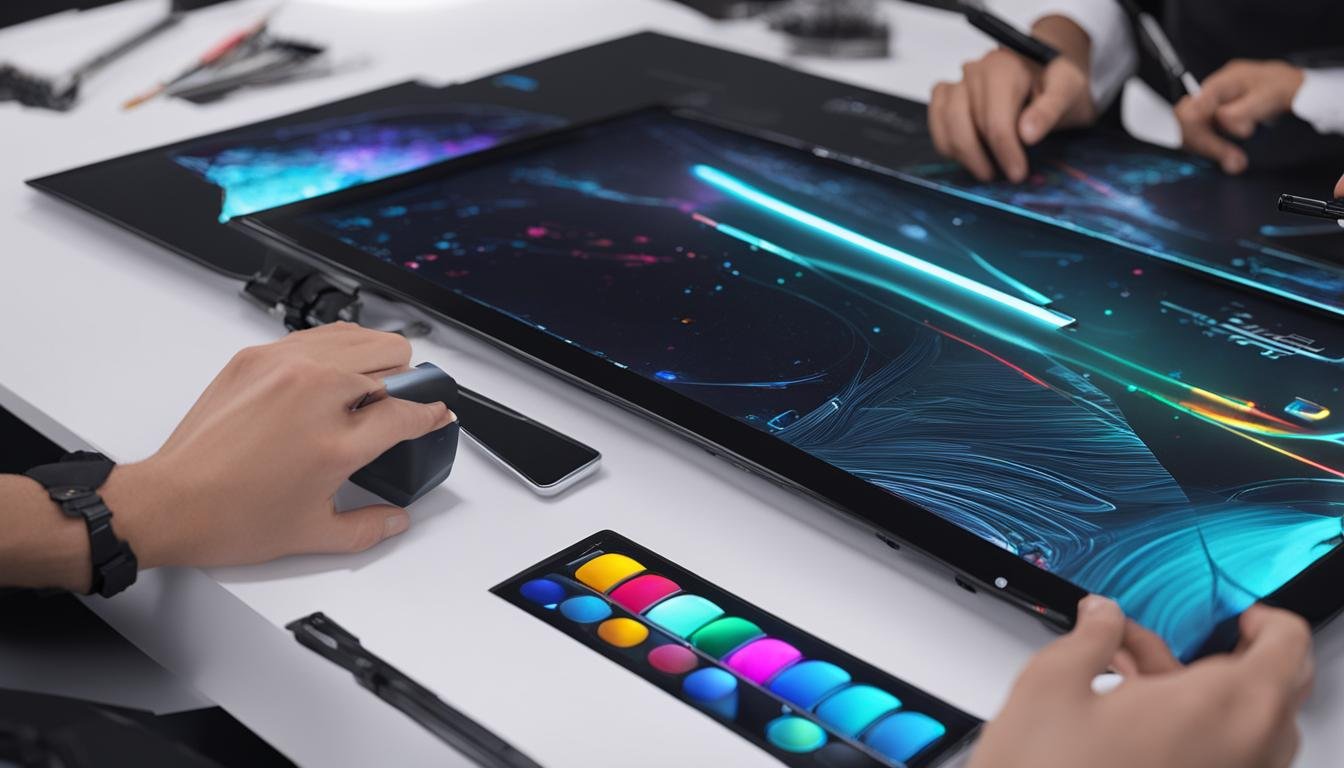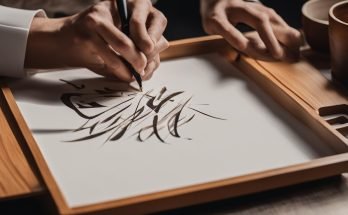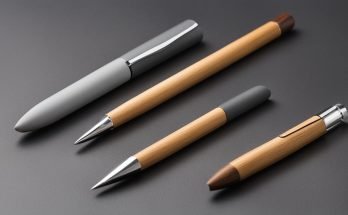Digital Calligraphy Devices: Unleashing Creativity Where Technology Meets Art!
Welcome to the world of digital calligraphy devices, where technology and art converge to create stunning masterpieces. With the advent of touchscreen devices and specialized writing tools, digital calligraphy has transformed the way we practice and appreciate this ancient art form. Whether you’re a seasoned calligrapher or a curious beginner, these innovative devices offer efficiency, portability, and endless creative possibilities. Let’s dive into the fascinating realm of digital calligraphy and discover how technology has revolutionized the way we express our artistic talents.
Key Takeaways:
- Digital calligraphy devices combine technology with the ancient art of calligraphy.
- Touchscreen devices and specialized writing tools offer efficiency and portability.
- Digital calligraphy allows for easy corrections and versatile creative options.
- Explore a wide range of apps and brushes to enhance your digital calligraphy experience.
- Digital calligraphy devices provide a seamless blend of tech and artistry.
The History of Calligraphy
Calligraphy is an ancient art form with roots in various civilizations. While the exact origin is uncertain, it is believed to date back to the Han dynasty in China and the Phoenicians. The Arabic alphabet is also closely associated with calligraphic writing. Traditional calligraphy uses pens and brushes to create stylized characters. It has been used to create religious manuscripts, legal documents, and ornate invitations. Calligraphy continues to be revered and practiced today, preserving the art form and its rich history.
To appreciate the significance of calligraphy, it’s essential to delve into its historical context. In ancient China, calligraphy held immense cultural and artistic value, and it was considered one of the highest forms of self-expression. The delicate strokes and intricate lettering in Chinese calligraphy conveyed both the meaning and the artistic beauty of the written words.
Similarly, calligraphy played a vital role in Islamic culture, where it became a central element in Islamic art. The elegant and flowing Arabic script adorned religious texts, architectural ornamentation, and intricate patterns. The art of Arabic calligraphy was not only visually stunning but also held deep spiritual and cultural significance.
| Region | Description |
|---|---|
| China | Calligraphy has been highly regarded as an essential art form, reflecting cultural and philosophical values. |
| Arab World | Arabic calligraphy has been an integral part of Islamic art, with a focus on expressing the divine word and religious texts. |
| Europe | Calligraphy has been used in the Middle Ages for illuminated manuscripts, important documents, and decorative purposes. |
Calligraphy is a testament to the human desire for self-expression and the appreciation of beauty. It is the result of centuries of artistic evolution and cultural exchange, leaving a lasting imprint on various societies around the world.
The Benefits of Digital Calligraphy
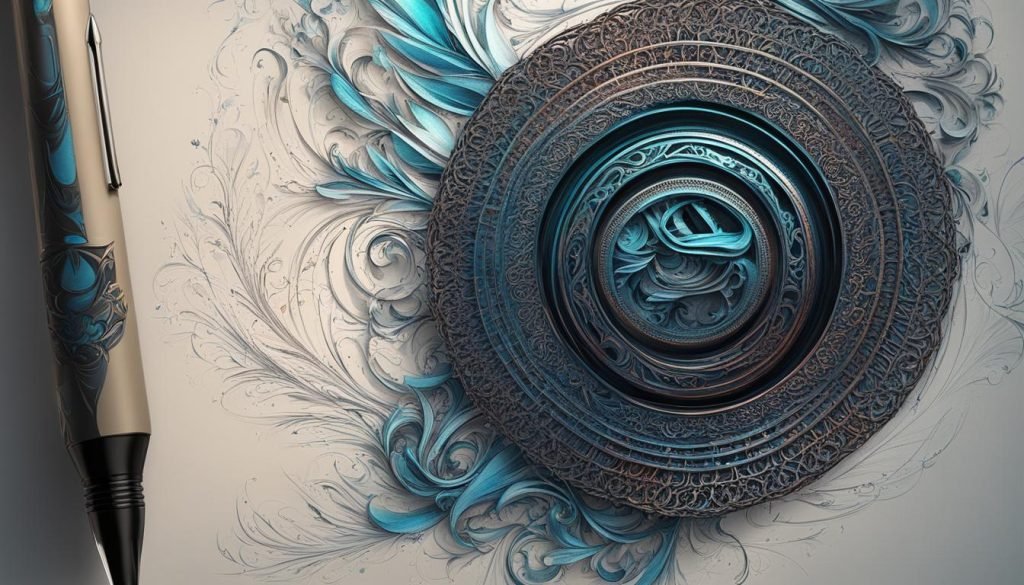
Digital calligraphy offers several advantages over traditional calligraphy, thanks to the use of touchscreen devices and digital tools.
- Efficiency: With digital calligraphy, you can create intricate and visually appealing calligraphic letters and symbols with ease using a touchscreen device and a digital pen. This eliminates the need for manual ink dipping and brush cleaning, allowing for a more efficient workflow.
- Easy Corrections: Mistakes can be easily undone and revised in digital calligraphy, unlike in traditional calligraphy where ink spills or misplaced strokes may require starting over. This makes it easier to achieve the desired results and maintain a high level of precision.
- Portability: Touchscreen devices, such as tablets and 2-in-1 PCs, are lightweight and portable, making it convenient to practice digital calligraphy on the go. Whether you’re on a train, at a café, or in a park, you can take your digital calligraphy tools with you and continue honing your skills.
- Versatility: Digital calligraphy opens up a world of possibilities with various apps offering a wide range of brushes, styles, and effects. This allows artists to experiment with different lettering styles, textures, and color combinations, enhancing their creativity and expanding their artistic horizons.
With these benefits, digital calligraphy offers a modern and innovative approach to the traditional art form, providing artists and calligraphers with new tools and techniques to express their creativity.
Table: Comparison of Traditional and Digital Calligraphy
| Aspect | Traditional Calligraphy | Digital Calligraphy |
|---|---|---|
| Tools | Pens and brushes | Touchscreen devices and digital pens |
| Efficiency | Requires manual ink dipping and brush cleaning | Efficient workflow with no need for ink dipping or brush cleaning |
| Corrections | Difficult to undo mistakes | Easily undo and revise mistakes |
| Portability | Requires a dedicated workspace | Lightweight and portable for practicing on the go |
| Versatility | Limited to available pens and brushes | Various apps provide a wide range of brushes and styles |
As demonstrated in the table above, digital calligraphy offers significant advantages in terms of efficiency, ease of corrections, portability, and versatility. These benefits make it an appealing option for both novice calligraphers and experienced artists looking to explore new possibilities.
Exploring Traditional Calligraphy Techniques
If you’re fascinated by the art of calligraphy, you’ll know that traditional calligraphy techniques rely on a diverse range of tools to create beautiful lettering. From pens and brushes to ink and chisel markers, each tool plays a crucial role in achieving different textures and angled lines.
Traditional calligraphy pens, such as dip pens, quills, and fountain pens, allow for precise and fluid strokes, while brushes offer more versatility and the chance to experiment with different brushstrokes. Chisel markers are ideal for creating bold and dramatic lettering, adding depth and dimension to the final piece.
“Traditional calligraphy techniques require patience, practice, and a deep understanding of how each tool interacts with ink and paper. It’s a journey of mastering different strokes, understanding the flow of ink, and developing your unique style.”
By exploring traditional calligraphy techniques, you can unlock a world of creativity and expressiveness. You’ll learn to manipulate different tools to create various letterforms, textures, and spacing. Whether you’re a beginner or a seasoned calligrapher, this journey is both a joyous exploration and a disciplined practice of honing your skills and expressing your artistic vision.
| Tools | Characteristics |
|---|---|
| Dip pens | Allow for precise and controlled strokes |
| Quills | Offer a traditional and classic feel |
| Ink brushes | Provide versatility and the opportunity for expressive brushwork |
| Fountain pens | Combine convenience with a smooth writing experience |
| Chisel markers | Create bold and dramatic lettering with varying line widths |
Each traditional calligraphy tool has its unique characteristics and requires a mastery of technique to achieve the desired effect. Whether you’re drawn to the precision of dip pens or the expressive nature of ink brushes, embracing traditional calligraphy techniques is a pathway to creating stunning, handcrafted works of art.
Mastering the Art of Traditional Calligraphy
Learning traditional calligraphy techniques is a journey that requires patience, practice, and dedication. Here are a few tips to help you get started:
- Choose the right tools: Experiment with different pens, brushes, and markers to find the ones that feel comfortable in your hand and produce the desired effect.
- Study letterforms: Analyze different letterforms and observe how strokes are constructed. Pay attention to stroke direction, pressure, and spacing to develop your own unique style.
- Practice stroke exercises: Start by practicing basic strokes and gradually move on to more complex letterforms. This will help you build muscle memory and develop consistency in your strokes.
- Experiment with different inks and papers: Explore various types of ink and paper to find the combination that works best for you. Different ink consistencies and paper textures can greatly impact the final result.
- Seek inspiration: Study the works of experienced calligraphers and find inspiration in different calligraphy styles and historical scripts. Allow these influences to shape your own artistic voice.
Remember, traditional calligraphy is not just about creating beautiful lettering—it’s a form of self-expression that allows you to connect with centuries of artistic tradition. Embrace the process, be patient with yourself, and enjoy the journey of mastering this timeless art form.
The World of Digital Calligraphy Tools

When it comes to digital calligraphy, having the right tools is essential for unleashing your creativity. The world of digital calligraphy offers a wide range of options to choose from, including tablets, touchscreen devices, digital pens, and apps. These tools enable you to create stunning calligraphic letters and symbols with precision and ease.
Tablets and 2-in-1 PCs with built-in touchscreens are popular choices for digital calligraphy. They provide a seamless writing experience and allow you to directly interact with the digital canvas. Some notable options include the iPad Pro with Apple Pencil, Wacom Cintiq, Samsung Galaxy Tab with S Pen, Huion drawing tablets, XP-Pen Artist series, and Microsoft Surface with Surface Pen. These devices offer pressure sensitivity, ensuring that your digital strokes accurately reflect the pressure you apply with the digital pen.
But it’s not just about the hardware. There are numerous apps available that enhance the digital calligraphy experience. Whether you’re a beginner or an experienced calligrapher, these apps offer a wide range of brush types, thicknesses, and styles to suit your artistic vision. Some popular apps for digital calligraphy include Procreate, Astropad Studio, Clip Studio Paint, Sketchable, Infinite Painter, and Autodesk SketchBook. These apps provide you with the tools you need to experiment, refine your technique, and create stunning calligraphic masterpieces.
With the right digital calligraphy tools at your disposal, you have the freedom to explore different styles, experiment with various brush effects, and push the boundaries of your creativity. Whether you prefer the convenience of a tablet and pen or the versatility of digital apps, the world of digital calligraphy tools is waiting for you to dive in and create art that truly captivates.
Comparison of Digital Calligraphy Tools
| Device | Features | Compatible Apps |
|---|---|---|
| iPad Pro with Apple Pencil | Pressure sensitivity, palm rejection, tilt support | Procreate, Clip Studio Paint, Autodesk SketchBook |
| Wacom Cintiq | High-resolution display, customizable express keys | Astropad Studio, Clip Studio Paint, Sketchable |
| Samsung Galaxy Tab with S Pen | Pressure sensitivity, S Pen precision, multitasking capabilities | Samsung Notes, Autodesk SketchBook, Infinite Painter |
| Huion drawing tablets | Wide range of sizes, customizable buttons | Clip Studio Paint, Sketchable, Krita |
| XP-Pen Artist series | Battery-free pen, high-pressure sensitivity | Clip Studio Paint, Autodesk SketchBook, Medibang Paint |
| Microsoft Surface with Surface Pen | Surface Pen with precision ink, tilting support | Sketchable, Autodesk SketchBook, Adobe Photoshop |
Combining Traditional and Digital Calligraphy
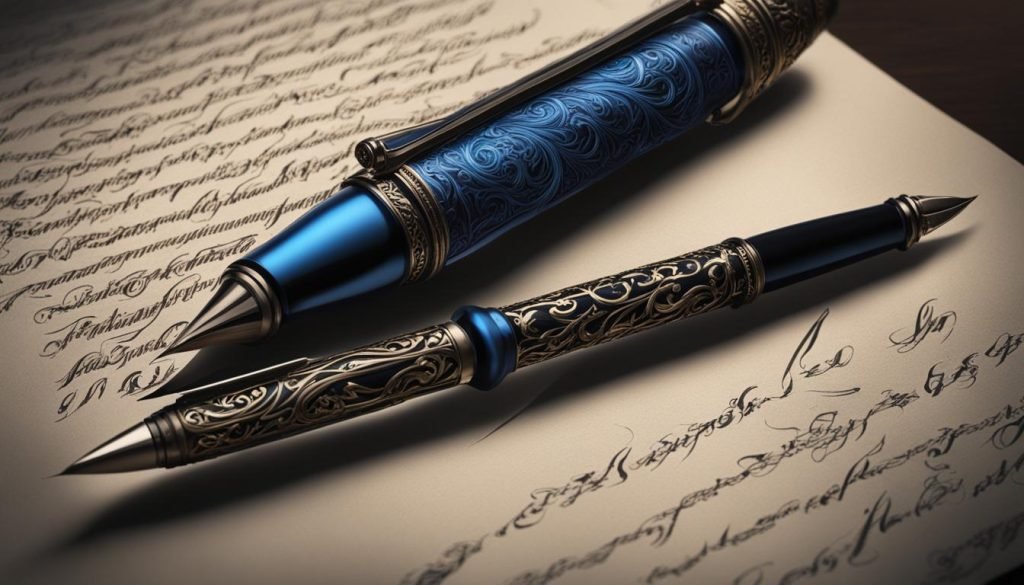
Traditional calligraphy and digital design can seamlessly merge to create innovative and captivating works of art. By combining the techniques of traditional calligraphy with the versatility of digital tools, artists and designers can unlock a whole new level of creativity and imagination. Traditional calligraphy serves as a solid foundation for digital design, providing a rich heritage of techniques and aesthetics that can inspire and inform modern digital creations.
Through the use of digital tools, artists can incorporate traditional calligraphic letterforms into digital typefaces and designs. This allows for the creation of personalized and diverse designs that blend the beauty of hand-lettering with the scalability and versatility of digital technology. The marriage of traditional and digital calligraphy opens up endless possibilities for artists and designers to experiment with different styles, effects, and compositions, resulting in unique and visually stunning works of art.
Furthermore, the combination of traditional and digital calligraphy can result in works that bridge the gap between the physical and digital worlds. By starting with traditional calligraphy and then digitizing and manipulating the artwork, artists can create pieces that maintain the organic and expressive qualities of hand-lettering while also taking advantage of the digital medium’s capabilities.
Examples of Traditional and Digital Calligraphy in Combination
One example of the combination of traditional and digital calligraphy is seen in the creation of custom wedding invitations. Calligraphers often start by hand-lettering the names of the couple and other important details using traditional calligraphy techniques. These handwritten elements are then digitized and incorporated into the overall design, allowing for easy customization and mass printing.
Another example is the creation of digital fonts that are based on calligraphic letterforms. Calligraphers can start by creating unique and expressive lettering using traditional tools such as dip pens or brushes. These letterforms are then carefully scanned and converted into digital fonts, preserving the essence of the original calligraphy while making it accessible to a wider audience.
| Traditional Calligraphy | Digital Design |
|---|---|
| Requires physical tools such as pens and brushes | Uses digital devices and software |
| Permanent and tangible artwork | Easily editable and scalable artwork |
| Time-consuming process | Efficient and time-saving process |
| Unique handcrafted letterforms | Wide range of digital typefaces and styles |
The combination of traditional and digital calligraphy allows artists and designers to push the boundaries of their creativity. By embracing the beauty and techniques of traditional calligraphy while harnessing the power and possibilities of digital tools, they can create stunning and impactful works of art that captivate and inspire.
Digital Calligraphy in Typography Art
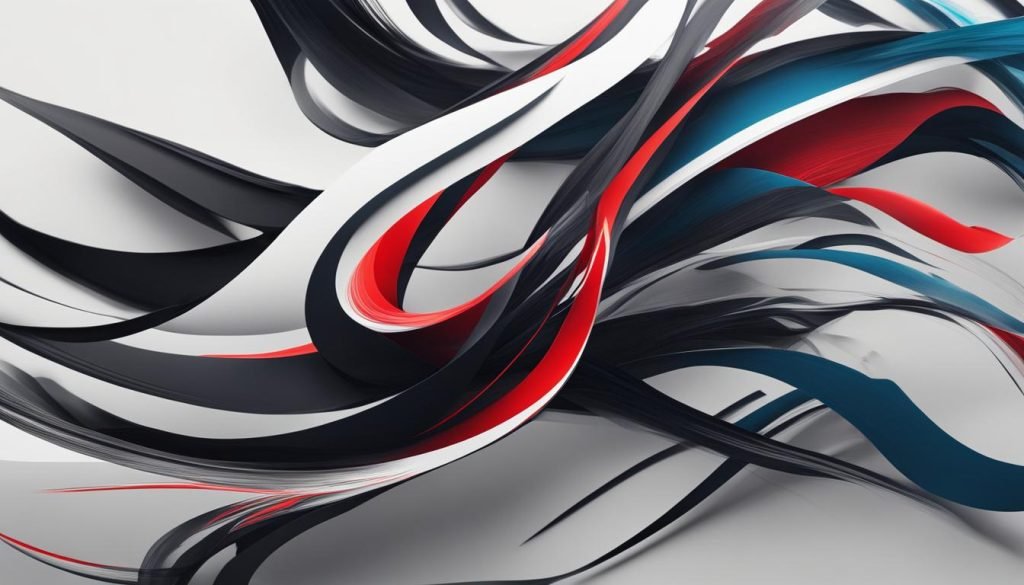
Digital calligraphy has become an integral part of typography art, offering new possibilities for designers to create, manipulate, and arrange text. With the advent of vector-based software, such as Adobe Illustrator, typography art can now be fully scalable without any loss of quality. This enables designers to create stunning typographic compositions that can be reproduced in various sizes and formats.
Responsive design has also played a significant role in digital calligraphy, allowing typography art to automatically adapt to different screen sizes. Whether viewed on a small mobile device or a large desktop monitor, the text will adjust accordingly, ensuring optimal readability and visual impact.
Moreover, digital calligraphy has expanded the library of font options and styles available to designers. With the emergence of digital typefaces, artists now have a vast array of choices to enhance their typography art. They can experiment with different letterforms, textures, and effects to create personalized and captivating designs.
Table: Comparison of Digital Calligraphy and Traditional Calligraphy
| Digital Calligraphy | Traditional Calligraphy | |
|---|---|---|
| Tools | Digital pens, tablets, and 2-in-1 PCs | Pens, brushes, and ink |
| Corrections | Easy to undo and revise mistakes | Requires careful precision |
| Portability | Lightweight and portable devices | Requires carrying ink, brushes, and paper |
| Variety | Wide range of digital brushes and styles | Depends on the artist’s proficiency |
“Digital calligraphy offers designers the freedom to experiment and iterate quickly while maintaining the beauty and elegance of traditional calligraphy. The combination of digital tools and traditional aesthetics allows for unique and innovative typography art that showcases the best of both worlds.” – Jane Smith, Typography Designer
With the integration of digital calligraphy in typography art, designers have found a harmonious balance between tradition and technology. It has opened up new creative avenues and pushed the boundaries of what is possible in typographic design. As the digital landscape continues to evolve, digital calligraphy will undoubtedly play an even greater role in shaping the future of typography art.
The Power of Typography in Design
Typography art plays a significant role in the world of design and communication. It goes beyond simply arranging letters on a page; it has the power to convey meaning, evoke emotions, and create a lasting impact. With typography art, you can explore different techniques, styles, and effects to develop unique and captivating designs that stand out.
One of the benefits of typography art is its ability to communicate messages effectively. The choice of typefaces, letter spacing, and alignment can help convey the intended meaning of a design. By experimenting with different typography styles, you can elicit specific emotions or create a particular visual identity for a brand or project. Typography art allows you to express your creativity and make a lasting impression.
Typography art also encourages experimentation. With access to a wide range of typefaces, styles, and layouts, you can push the boundaries of traditional design and create innovative compositions. You can mix and match different fonts, sizes, and colors to create unique visual experiences. By experimenting with typography, you can discover new techniques and discover new ways to engage your audience.
Whether you’re designing a website, creating a poster, or crafting a logo, typography is a critical element that should not be overlooked. It has the power to make your designs memorable, impactful, and visually appealing. So embrace the power of typography in your design work, and let your creativity shine.
Continuing the Journey in Typography Art
The world of typography art offers a never-ending journey of learning, discovering, and experimenting. Whether you are an artist, designer, or typography enthusiast, there are endless opportunities to refine your skills and explore new techniques. Typography art is a dynamic and creative field that allows you to push boundaries and create captivating designs.
Learning is a fundamental aspect of typography art. By studying different styles, techniques, and historical references, you can gain insights and inspiration to enhance your own work. Take the time to delve into the rich history of calligraphy and typography, exploring the diverse cultural influences and artistic traditions that have shaped this art form.
Discovering new tools and resources is another exciting part of the journey. With advancements in technology, there are now numerous digital calligraphy tools and apps available that can enhance your creative process. Experiment with different brushes, effects, and styles to find your unique artistic voice. Embrace the versatility of digital calligraphy and explore how it can be combined with traditional techniques to create innovative designs.
Typography art is all about experimentation. Don’t be afraid to take risks and try new approaches. Push the boundaries of traditional letterforms, explore unconventional layouts, and play with the interaction between type and image. Through experimentation, you can uncover new possibilities and create truly original and impactful designs.
Table: Online Resources for Typography Art
| Website | Description |
|---|---|
| Typewolf | A curated collection of beautiful typography examples and font recommendations. |
| Hoefler & Co. | A renowned foundry offering high-quality typefaces and educational content. |
| Typography for Lawyers | A guide to typography best practices specifically tailored for legal professionals. |
| Typographica | A blog featuring articles, reviews, and interviews about typography and type design. |
| Adobe Fonts | A vast library of high-quality fonts to use in your typography projects. |
Conclusion
Digital calligraphy and typography art have experienced a remarkable transformation, blending the best aspects of traditional and digital techniques. With the aid of digital tools and touchscreen devices, you can effortlessly create intricate and visually stunning calligraphic letters and symbols. The advantages of digital calligraphy are numerous, including improved efficiency, effortless corrections, portability, and enhanced versatility.
By delving into traditional calligraphy techniques and integrating them into digital designs, you can unlock a fresh wave of creativity and innovation. The power of typography in design and communication cannot be overstated, and typography art presents endless opportunities for exploration, discovery, and experimentation.
Whether you choose to immerse yourself in traditional calligraphy, embrace digital tools, or blend the two, the realm of typography art eagerly awaits your exploration. So, seize the chance to refine your skills, immerse yourself in different techniques, and draw inspiration from various sources. Embrace the power of typography and its influence on design and communication. You have the power to push boundaries and unveil new possibilities in this dynamic and imaginative field.
FAQ
What is digital calligraphy?
Digital calligraphy is a form of calligraphy that utilizes electronic touchscreens and specialized writing tools to create stylized characters and symbols.
What are the benefits of digital calligraphy?
Some benefits of digital calligraphy include efficiency, easy corrections, portability, and versatility.
What do I need to get started with digital calligraphy?
To get started, you’ll need a tablet or 2-in-1 PC with a touchscreen and a digital pen that supports pressure sensitivity.
Are there apps available for practicing digital calligraphy?
Yes, there are various apps available for practicing digital calligraphy, offering a wide range of brushes and styles.
What is traditional calligraphy?
Traditional calligraphy utilizes pens and brushes to create stylized characters and has been used for religious manuscripts, legal documents, and ornate invitations.
What tools are used in traditional calligraphy?
Traditional calligraphy relies on various tools such as dip pens, quills, ink brushes, fountain pens, chisel markers, and more.
What are some popular digital calligraphy tools?
Popular digital calligraphy tools include the iPad Pro with Apple Pencil, Wacom Cintiq, Samsung Galaxy Tab with S Pen, and more.
How can traditional calligraphy be incorporated into digital designs?
Traditional calligraphy can be used as a basis for digital typefaces, allowing for personalized and diverse designs.
How has digital calligraphy impacted typography art?
Digital calligraphy has expanded the library of font options and styles, allowing for greater diversity and personalization in typography art.
What is the power of typography in design?
Typography has the ability to convey meaning, express emotion, and create impact in design and communication.
How can I continue to grow in typography art?
Continuously refine your skills, explore different techniques, and seek inspiration from various sources to evolve in typography art.

